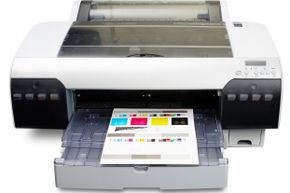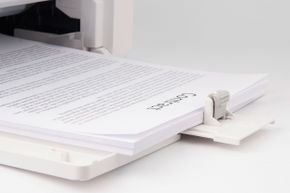It's too bad that it's illegal to make counterfeit money on your home printer. Because the real crime, it seems, is the wallet-crushing cost you can incur when you click "Print." In lieu of cranking out Benjamins using your home PC, you may have to settle for cutting printing costs wherever you can.
But pinching pennies on printing isn't as simple as picking the cheapest possible printer or throwing down cash on third-party ink cartridges. Such strategies could actually cost you dearly.
Advertisement
For example, if you pick a bargain-basement printer, you might be happy with the printer itself but find yourself burned by ink costs. Some low-cost printers use combined color cartridges, and when one color is depleted, you have to replace every color even if the other hues haven't run dry. Not only do you wind up throwing away good ink, but you have to buy new ink cartridges more often. Over the life of the printer you'd spend hundreds of dollars more on ink than you did on the printer itself.
You can also burn your budget by selecting the wrong paper. Don't use the fancy stuff unless you actually need to, and don't leave fancy paper in the printer to be accidentally used when you're just printing out a recipe.
Purchasing a printer that has more features than you need can also set you back. Do you really need a color printer, or could a simpler black-and-white machine cover your printing needs?
That we pay these prices is a testament to the power of technology marketing and a sign of our dependence on the convenience of home printing. But there are ways to lessen your printing costs immediately. The results will directly impact your pocketbook in a multitude of money-saving ways.










